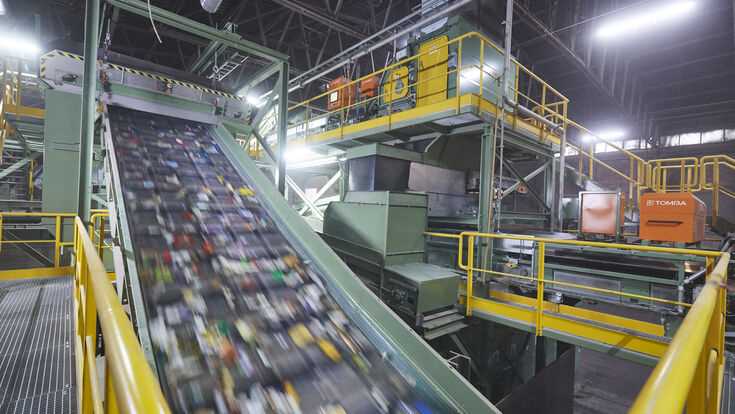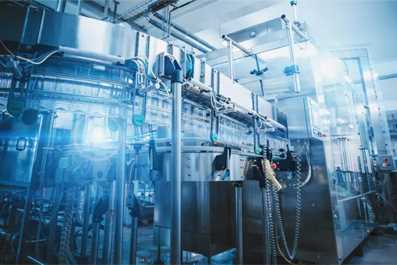
Plastic has become an integral part of our daily lives, from the packaging of our food to the construction of our houses. As the demand for plastic continues to rise, so does the need for large-scale plastic production facilities. One such facility stands out from the rest – the largest plastic factory in the world.
Located in the heart of [location], this massive facility spans over [area] square meters and employs thousands of workers. Equipped with state-of-the-art technology and machinery, this factory has the capability to produce a staggering [amount] tons of plastic per year, making it a global leader in plastic production.
What sets this factory apart is its commitment to sustainability and environmental responsibility. Despite its massive production capacity, the factory has implemented various measures to reduce its carbon footprint and minimize waste. From recycling and reusing materials to adopting energy-efficient manufacturing processes, this facility is setting new standards for sustainable plastic production.
Moreover, the factory is not just focused on manufacturing plastic; it is also actively involved in research and development. Dedicated teams of scientists and engineers are constantly working to innovate and create new plastic formulations that are more environmentally friendly and have a lower impact on our planet.
In conclusion, the largest plastic factory in the world is not only an impressive example of technological advancement and production capabilities but also a beacon of sustainability in the plastic industry. With its commitment to reducing environmental impact and ongoing research efforts, this facility is paving the way for a more sustainable and responsible future in plastic production.
- History and Background of the Factory
- Size and Production Capacity
- Location of the Factory
- Transportation
- Infrastructure
- Environmental Impact and Sustainability Practices
- Efficient Resource Management
- Renewable Energy Sources
- Waste Management and Recycling
- Environmental Education and Awareness
- Q&A:
- Where is the largest plastic factory in the world located?
- What is the capacity of the largest plastic factory in the world?
- How many employees work at the largest plastic factory in the world?
- What types of plastic products are manufactured at the largest plastic factory in the world?
History and Background of the Factory
The history of the largest plastic factory in the world dates back to the late 20th century. It was established in [year] by [founder’s name] with the vision of revolutionizing the plastic industry.
Since its inception, the factory has grown exponentially, becoming a global leader in the production and distribution of plastic products. It has constantly adapted to meet the changing demands of the market and has consistently invested in research and development to stay ahead of its competition.
Over the years, the factory has innovated various manufacturing processes and technologies, making it capable of producing a wide range of plastic products. From simple everyday items to complex industrial components, the factory has fully automated production lines that ensure high-quality output and efficient operations.
Environmental Responsibility
As the largest plastic factory in the world, the company is acutely aware of its environmental impact. It has implemented sustainable practices throughout its operations, striving to minimize waste generation and promote recycling.
The factory constantly invests in state-of-the-art technologies that reduce energy consumption and minimize carbon emissions. It has also partnered with local communities and environmental organizations to support initiatives aimed at preserving the ecosystem and promoting a green future.
Going forward, the factory continues to prioritize environmental responsibility as it strives to maintain its position as an industry leader.
Size and Production Capacity

The largest plastic factory in the world is an impressive facility that spans over 500,000 square feet. With its vast size, it is capable of producing an enormous amount of plastic products each day.
The factory operates on a 24/7 basis, with state-of-the-art machinery and production lines. It has a production capacity of over 1 million plastic items per day, making it a crucial player in the global plastic industry.
The facility houses a wide range of plastic manufacturing equipment, including injection molding machines, extrusion lines, and blow molding machines. These machines work together seamlessly to produce a diverse array of plastic products, ranging from bottles and containers to automotive components and electronic devices.
The factory’s production capacity is a testament to its efficiency and commitment to meeting the ever-growing global demand for plastic products. Its ability to produce such a large volume of plastic items not only contributes to the economy but also presents various challenges in terms of sustainability and waste management.
To address these challenges, the factory has implemented various measures to reduce waste and minimize its environmental impact. It has invested in recycling programs and uses advanced technologies to ensure that the plastic materials used in production are reused or properly disposed of.
Despite the environmental concerns associated with plastic production, the size and production capacity of the world’s largest plastic factory demonstrate the significant role it plays in meeting the needs of various industries worldwide.
Location of the Factory

The largest plastic factory in the world is located in the city of Shenzhen, Guangdong Province, China. Situated in the southern part of the country, Shenzhen is a major technology hub and one of the fastest-growing cities in China. With a population of over 12 million people, it is a bustling metropolis known for its vibrant economy and rapid urban development.
The plastic factory is strategically positioned in Shenzhen to take advantage of its proximity to major shipping ports, such as the Port of Shenzhen and the Port of Hong Kong. This enables efficient transportation and export of plastic products to global markets.
Within the city, the factory is situated in an industrial zone, along with other manufacturing facilities. This allows for easy access to raw materials and necessary infrastructure like electricity and water supply. Being part of an industrial zone also facilitates collaboration and cooperation between different factories, fostering innovation and driving the overall growth of the plastics industry.
Transportation
Shenzhen is well connected through various modes of transportation, making it convenient for the plastic factory to transport goods to domestic and international markets. The city has an extensive road network, with highways linking it to other major cities in China. It also has a modern metro system, providing efficient transportation within the city.
In addition to roads and metro, Shenzhen has a large international airport, the Shenzhen Bao’an International Airport. This airport serves as an important transportation hub in southern China, offering flights to both domestic and international destinations. It provides the plastic factory with convenient air freight options for rapid delivery of products.
Infrastructure
The city of Shenzhen has invested heavily in its infrastructure to support its growing industries. It has reliable electricity and water supply systems, ensuring uninterrupted operations for the plastic factory. The city also has advanced telecommunications and internet infrastructure, which is crucial for efficient communication and data exchange.
The local government has established industrial parks and zones to attract businesses and support industrial development. These areas provide specialized facilities and services, tailored to the needs of manufacturing companies. The plastic factory benefits from being located in such an industrial zone, as it can leverage shared resources and infrastructure.
| Location | Details |
|---|---|
| City | Shenzhen, Guangdong Province, China |
| Industrial Zone | Within Shenzhen, in an industrial zone |
| Main Transportation | Ports, roads, metro, and an international airport |
| Infrastructure | Reliable electricity and water supply, advanced telecommunications, and industrial parks |
Environmental Impact and Sustainability Practices
The largest plastic factory in the world has a significant environmental impact on our planet. Its production processes contribute to air and water pollution, greenhouse gas emissions, and waste generation. However, the company recognizes these issues and has implemented a range of sustainability practices to mitigate their environmental impact.
Efficient Resource Management
The factory focuses on efficient resource management to reduce its overall environmental footprint. It has invested in state-of-the-art technologies and equipment to optimize energy efficiency and water usage throughout its manufacturing processes. This includes implementing recycling programs to reduce waste and reuse materials wherever possible.
Renewable Energy Sources
In an effort to reduce its reliance on fossil fuels, the factory has also adopted renewable energy sources. It has invested in solar panels and wind turbines to generate clean electricity for its operations, significantly reducing its carbon emissions. The use of renewable energy further contributes to a more sustainable production process.
Waste Management and Recycling
The factory has implemented comprehensive waste management and recycling programs to minimize the environmental impact of its operations. It utilizes advanced waste treatment systems to properly dispose of or recycle plastic waste, reducing the amount of plastic pollution that enters landfills and water bodies. It also partners with local communities to promote responsible waste disposal and recycling practices.
Environmental Education and Awareness
The company understands the importance of environmental education and awareness in promoting sustainability. It conducts regular training sessions and workshops for its employees to raise awareness about the environmental impact of plastic manufacturing and to provide them with the knowledge and tools to reduce their own environmental footprint. The factory also engages with the local community and educational institutions to support environmental initiatives and promote sustainable practices.
Through these sustainability practices, the largest plastic factory in the world is working towards minimizing its environmental impact and contributing to a more sustainable future.
Q&A:
Where is the largest plastic factory in the world located?
The largest plastic factory in the world is located in X city, country Y.
What is the capacity of the largest plastic factory in the world?
The capacity of the largest plastic factory in the world is z million tons per year.
How many employees work at the largest plastic factory in the world?
The largest plastic factory in the world employs A thousand workers.
What types of plastic products are manufactured at the largest plastic factory in the world?
The largest plastic factory in the world manufactures a wide range of plastic products, including bottles, containers, packaging materials, and consumer goods.